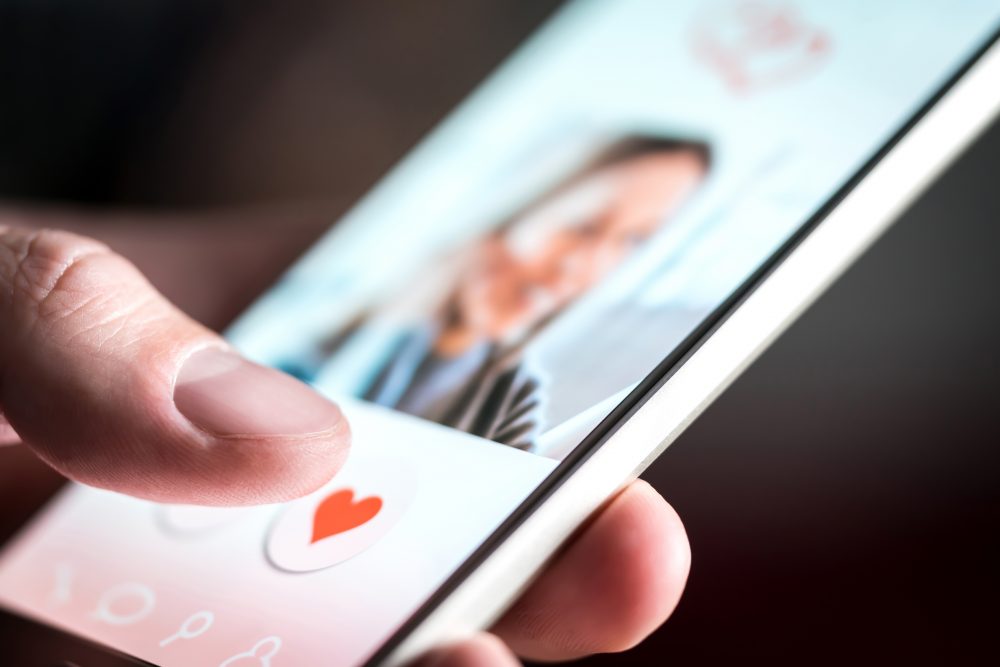
Overview of Swiping Culture
Definition of Swiping Culture
Swiping culture refers to the practice of quickly assessing potential romantic partners through mobile applications, primarily using a left or right swipe mechanism to indicate disinterest or interest. This instant judgment reflects a modern approach to dating, where choices must be made within seconds. Users often find themselves caught in a cycle of scrolling through profiles, sometimes neglecting deeper connection opportunities.
Evolution of Swiping Culture
This approach has evolved significantly since the inception of dating apps. Initially, dating platforms relied on detailed profiles and text-based interactions. However, with the introduction of apps like Tinder in 2012, swiping became popular:
- 2012: Tinder reshaped online dating, emphasizing speed and ease.
- 2014: Other platforms like Bumble and Hinge adopted similar formats, adding unique features to appeal to users.
- Present: Swiping has permeated social media and even professional networking, underscoring its widespread acceptance.
Common Platforms with Swiping Features
Today, several platforms incorporate swiping features, catering to different demographics and needs:
- Tinder: The pioneer of swiping culture, primarily focused on casual dating.
- Bumble: Empowers women by allowing them to initiate conversation.
- Hinge: Encourages deeper connections through prompts and shared interests.
- OkCupid: Combines traditional matching with a swiping interface, enhancing user interaction.
This rapid shift in dating practices demonstrates the impact of technology on human relationships, illustrating both the appeal and the challenges of swiping culture.

Pros of Swiping Culture
Convenient Way to Meet People
One of the undeniable advantages of swiping culture is its convenience. Users can meet potential partners from the comfort of their homes or while on the go, utilizing just their smartphones. This accessibility means that people can connect anytime, anywhere. Imagine sitting on a train, swiping through profiles, and potentially finding a match before reaching your destination!
Efficiency in Matching
Swiping provides a streamlined method for finding romantic interests. Users can quickly filter through profiles to find matches that suit their preferences. In contrast to traditional dating methods, swiping allows for:
- Fast decision-making
- Immediate potential connections
- Time-saving interactions
It’s almost like online shopping for relationships!
Increased Options and Exposure
With swiping apps, users gain access to a larger pool of potential partners than they might encounter in their daily lives. The digital world opens up:
- Opportunities to connect with different demographics
- Options beyond one’s local area
- A chance to meet individuals with varying interests and backgrounds
This increased exposure can lead to unexpected connections that might not have happened otherwise, making the dating experience richer and more diverse.

Cons of Swiping Culture
Superficial Judgments
Despite its advantages, swiping culture often encourages superficial judgments. With just a fleeting glance at someone’s photo, users are compelled to decide if they’re interested or not. This quick assessment can lead to a missed opportunity for deeper appreciation of a person’s character or interests. It’s akin to judging a book by its cover, and many feel it diminishes authenticity in connecting.
Lack of Genuine Connection
The emphasis on speed and efficiency can hinder the development of genuine connections. Instead of fostering meaningful conversations, swiping often leads to brief exchanges that lack depth. Users may find themselves in endless swiping sessions with little reward, leaving them with a sense of disconnection. This phenomenon reflects the struggle between wanting to find love and navigating a fast-paced digital landscape.
Negative Impact on Self-Esteem
Moreover, swiping can have a detrimental effect on self-esteem. Continuous rejections can lead individuals to question their worth based on the opinions of strangers. Some contribute this decline in confidence to:
- Comparisons with idealized profiles
- Feeling overlooked or ignored in a crowded digital space
- The pressure to present an appealing image, often leading to inauthentic portrayals
These factors combined create a challenging emotional landscape for many who engage in swiping culture, highlighting its darker side amid the allure of digital dating.

Impact of Swiping Culture on Relationships
Shifting Dating Norms
As we dive deeper into swiping culture’s impact, one notable effect is the transformation of dating norms. Traditional courtship rituals have evolved into a more casual approach, where:
- First dates often feel like casual hangs rather than serious encounters.
- Dating has become more accessible to a broader audience, especially younger generations.
- Ghosting and quick break-ups are on the rise, reshaping expectations.
These shifts lead individuals to redefine what “dating” means in today’s context.
Communication Challenges
Alongside changing norms, communication has faced its own set of challenges. The reliance on texting and emojis can complicate the nuances of human interaction. Users may experience:
- Misinterpretations of tone or intent.
- Difficulty transitioning from digital conversations to in-person meetings.
- Shortened interactions that lack depth, leading to frustration.
These barriers can hinder the development of meaningful relationships and can feel like an obstacle course before reaching genuine connection.
Long-term Relationship Prospects
Lastly, swiping culture raises questions about long-term relationship prospects. While many enjoy casual dating, challenges arise when individuals seek deeper commitments. The focus on fast matches may skew priorities, leading to:
- A tendency to view relationships as temporary.
- Reduced investment in nurturing meaningful bonds.
- Difficulty forming long-term commitments due to a varied dating pool.
As a result, many individuals find themselves navigating a landscape that encourages fleeting interactions over lasting connections, making it crucial to reevaluate their dating strategies.

Coping Strategies for Dealing with Swiping Culture
Setting Personal Boundaries
Navigating the complexities of swiping culture requires intentionality, and one effective strategy is setting personal boundaries. Defining what you seek from dating apps can help filter out unwanted experiences. Consider establishing:
- Time limits: Allocate specific periods for swiping, preventing addiction.
- Emotional boundaries: Decide how much personal information you’re comfortable sharing initially.
- Criteria for matches: Create clear guidelines on who you wish to connect with.
Setting these boundaries can lead to a more positive and focused experience.
Balancing Virtual and Real-world Interactions
To counteract the pitfalls of swiping culture, it’s essential to balance online interactions with real-world connections. Don’t allow the digital world to become your sole engagement source. Engaging in:
- Social events: Attend meet-ups, parties, or community gatherings.
- Hobbies: Join classes or groups related to your interests to meet like-minded individuals.
- Friend suggestions: Ask friends to introduce you to potential partners.
Balancing these interactions fosters genuine relationships that may not emerge through swiping alone.
Seeking Meaningful Connections Beyond Swiping
Lastly, actively seek meaningful connections outside the swiping paradigm. Embrace opportunities that promote deeper engagement. Strategies include:
- Participating in group activities: Such as volunteering, which can bring people together for a common cause.
- Utilizing traditional dating approaches: Consider asking someone out Face-to-Face rather than relying solely on apps.
- Fostering friendships: Building a strong social circle can lead to authentic romantic connections down the line.
This holistic approach encourages a rich dating life, combining the conveniences of technology with the depth of personal interaction.

Societal Implications of Swiping Culture
Influence on Social Interaction
Swiping culture has significantly reshaped social interactions, influencing how individuals connect and communicate. The convenience of dating apps has led to:
- Reduced face-to-face interactions: Many prefer swiping over traditional meet-and-greets.
- Shortened conversational depth: Quick exchanges can lead to superficial connections instead of meaningful conversations.
This shift has created a new social landscape where spontaneity and genuine engagement sometimes take a back seat.
Perception of Relationships
Moreover, swiping culture has shifted how relationships are perceived. The availability of options can create a mindset where commitment feels less vital, leading to:
- Fear of missing out (FOMO): This can drive people to continuously seek new matches rather than focusing on building deep connections.
- Casual dating becoming the norm: Many now view relationships as temporary, which alters long-term relationship expectations.
Such changes can lead individuals to question the authenticity of their interactions and the value of lasting commitments.
Role of Technology in Modern Dating
Lastly, technology plays a pivotal role in modern dating, primarily by shaping how people initiate and maintain connections. Dating apps have introduced innovations like:
- Matching algorithms: Designed to suggest compatible partners based on user preferences and behaviors.
- Communication tools: Features like video calls and voice notes encouraging more personal engagement.
While technology facilitates initial connections, it begs the question of whether it’s truly fostering meaningful relationships or merely serving as a quick means to an end. As society navigates these changes, understanding the implications becomes crucial for maintaining healthy, realistic romantic expectations.

Ethical Considerations in Swiping Culture
Privacy Concerns
As swiping culture becomes more prevalent, privacy concerns have surfaced as a significant ethical issue. Users often share personal information, and with many apps collecting data, there’s a risk of:
- Data breaches: Sensitive information can be exposed, leading to potential misuse.
- Lack of consent: Many individuals may not fully understand what data they’re sharing or how it will be used.
This creates a pressing need for users to remain vigilant and informed about their privacy rights.
Objectification of Individuals
Another ethical consideration is the objectification of individuals inherent in the swiping mechanism. By reducing people to mere images or brief bios, users may unknowingly foster attitudes that prioritize physical appearance over personal qualities. Consequences include:
- Superficial judgments: Promoting a culture where worth is based on looks alone.
- Exacerbation of stereotypes: Narrowing dating pools based on predetermined ideals can harm diverse representations of beauty and character.
Recognizing this objectification is crucial for fostering a more respectful dating environment.
Responsibility of Platform Developers
Finally, there is an urgent call for platform developers to take responsibility in mitigating these ethical issues. They can implement features that promote safety and respect, such as:
- Enhanced privacy settings: Allowing users more control over their data.
- In-app reporting mechanisms: Enabling users to flag inappropriate behavior effectively.
By prioritizing ethical considerations, developers can create a healthier dating culture that respects individuals as more than just swiping options, ultimately fostering a safer and more meaningful experience for users.

Conclusion
Overall Impact of Swiping Culture
In summarizing the overall impact of swiping culture, it’s clear that while it has revolutionized the dating landscape, it also presents significant challenges. Users experience both the advantages of convenience and broadened choices and the drawbacks of superficial judgments and emotional detachment. Understanding these dynamics is vital for making the most of the modern dating experience.
Balanced Approach to Utilizing Swiping Apps
To navigate this complex world, adopting a balanced approach is essential. Users can enhance their experiences by:
- Establishing boundaries: Defining personal goals and limits while using apps.
- Integrating varied interactions: Actively seeking real-world connections alongside virtual ones.
- Staying mindful: Regularly reflecting on personal feelings and motivations behind swiping.
By consciously engaging with these platforms, individuals can enjoy the benefits of swiping culture while cultivating meaningful connections that transcend the digital realm.
